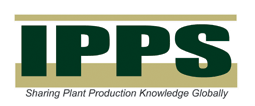|
Vol. 54
Title:
Micropropagation and Biotechnology in Forestry: Preliminary Results From the Danish Christmas Tree Improvement Programme
Authors:
Michel M.H. Kristensen, Jens I. Find and Peter Krogstrup
pp: 315-320
Abstract:
INTRODUCTION
The principal methods of micropropagation (in vitro propagation or tissue culture) are axillary budding, induction of adventitious buds, and somatic embryogenesis (where individual cultured cells or small groups of cells undergo development resembling that of the zygotic embryo. These methods are very expensive compared to conventional vegetative propagation due to the costly equipment and the technical staff that is needed to perform the techniques. An additional disadvantage of micropropagation is that it may lead to unwanted genetic alterations, e.g., somaclonal variation (George, 1993; Barbara, 1984). However in vitro propagation technology of forest trees has several potential benefits:
- Allow mass propagation of trees that are difficult to propagate by conventional means.
- Provides suitable material, e.g., somatic embryos for cryostorage in liquid nitrogen, permitting year-long field evaluation of stored clones.
- Micropropagation, e.g., somatic embryogenesis,
Full text:
IPPS members
ISHS members & pay-per-view
(PDF 197029 bytes)
Translate:
   IPPS membership administration
ISHS membership administration
|



